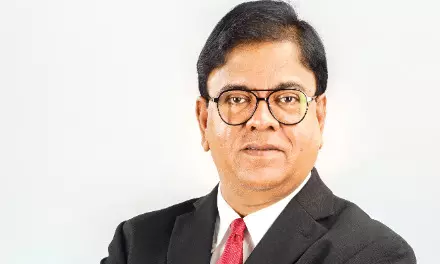CEO speaks: AI Is Changing Democracy: Are Young Voters Ready?

Artificial Intelligence (AI) is now woven into the very mechanics of how societies think, act, and choose their leaders. In India, the world’s largest democracy with the world’s youngest demographic, AI has become an invisible but decisive participant in our civic life. The question about whether technology is influencing our democracy is now moot. The real question is how prepared Gen Z and millennials are to shoulder the responsibility that comes with living in an AI-shaped public sphere.
Democracy is built on the basic and fundamental assumption that citizens make informed choices. But this assumption is being challenged by the way AI-driven platforms curate information. The news we consume, the posts we share, the videos we watch, mostly on social media, none of it reaches us neutrally. Algorithms designed to maximise engagement decide what surfaces on our screens. In doing so, they often reward emotion over accuracy, outrage over balance, and sensationalism over truth. Echo chambers have quietly replaced the open public square, narrowing perspectives instead of broadening them. For any democracy this shift carries profound implications for voter behaviour and public opinion.
More unsettling is the rise of AI-generated influence itself. Deepfakes, voice clones, synthetically engineered videos, and persuasive algorithms can now manipulate public sentiment at a speed and scale never seen before. A single falsified video can go viral and shape public perception long before any fact-check can catch up. Around the world, from the USA to Europe and elsewhere, elections have already felt the tectonic impact of digitally manufactured propaganda. When misinformation becomes indistinguishable from information, democracy’s foundation begins to crack. India should take note and be wary—but are we?
The influence of AI is not confined to campaigns and communication alone. It is entering the sphere of governance itself, from the public distribution systems (PDS) to automated decision-making in welfare and policing. While initiatives like ASHA (Anna Sahayata Holistic AI Solution) in the PDS system brings efficiency, it also raises questions of fairness, bias, privacy, and transparency. As algorithms become part of public administration, citizens need the awareness and agency to question how decisions that affect them are made.
India sits at a unique intersection in this global transformation. With over 800 million internet users and the world’s largest youth population, the country is both a laboratory of digital innovation and a high-risk zone for digital manipulation. Our fintech, edtech, health platforms, and social media ecosystems generate vast opportunities — but they also create vulnerabilities that can be exploited by misinformation, targeted propaganda, and polarization. For a society as diverse as ours, the stakes are even higher.
Gen Z and millennials are the central protagonists in this era of immense change. They make up more than half of India’s electorate and nearly all of its active digital population. Their political and social identities are shaped online, often subconsciously. Every swipe, like, comment, and share contributes to the digital ecosystem and AI training datasets that influences millions of others. They are the primary targets of AI-driven persuasion, especially through trends, memes, influencers, and micro-targeted content. They are also the amplifiers who unknowingly help misinformation travel faster than truth.
Because of this, the burden of responsibility on young citizens today is immense. This responsibility begins with a very simple habit: “verifying” before “amplifying”. In the digital age, misinformation can escalate into public harm with remarkable speed. Equally important is learning to recognise manipulated content — from deepfake videos to AI-generated voices and text. Digital literacy is no longer a technical skill; it is a basic civic responsibility.
Young citizens must also demand transparency from leaders, platforms, and institutions and ask some fundamental questions---“Who created this?”, “Why am I seeing it?”, and “What is the agenda behind it?”. Just as importantly, they must participate in conversations about AI policy, ethics, and civic technology and make their voices heard! The frameworks that govern AI will affect everything from elections to employment, and youth inclusion is essential for shaping these frameworks responsibly.
And above all, Gen Z and millennials must embrace a culture of responsible digital citizenship. Democracy thrives on disagreement, not disrespect. Online spaces must be arenas for informed debate, not breeding grounds for hate, division, or tribalism. The tone and character of India’s digital public discourse will increasingly be determined by its young people.
The next decade will be the defining period for AI and democracy. AI itself is not democratic or undemocratic. It is simply a tool, albeit very powerful. Whether that power strengthens or weakens society depends entirely on the values, awareness, and vigilance of the citizens who interact with it. India’s young generations are not just future voters; they are future architects of digital governance. If they rise to their responsibilities, AI can become a force for empowerment, inclusion, and progress. If they do not, technology may outpace democracy faster than we ever imagined!
The author is the Vice-Chancellor of Sister Nivedita University and Group CEO, Techno India Group. A visionary leader, he is shaping future-ready institutions and inspiring students to lead with purpose



